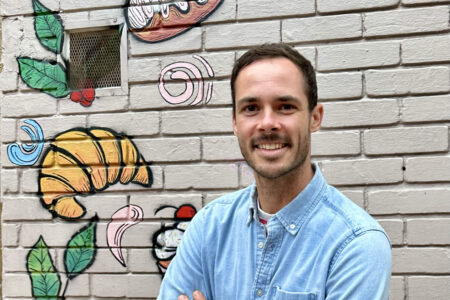Exhibit depicts colourful Tibetan life
A stroll through the latest art exhibit to open at the Grand Forks Art Gallery is both educational and exotic. The traditional Tibetan art by Choegyal Rinpoche depicts Tibetan life from sketches to full colour paintings. Some of the works are strictly spiritual renditions, but most are of the day-to-day life of a Tibetan. The 60 Tibetan Pearls exhibit is truly a unique collection of paintings by Rinpoche, a Tibetan monk that reflects over 30 years of his life including his flight from Tibet into India where he now lives with his people. From the brightly painted wooden carvings of the “Eight Auspicious Symbols” to vivid paintings of a “Tibetan Picnic” and the less detailed but bright group images of “Ceremony for Lord Stupa” the range of the artist’s vision is obvious. His desire to record Tibetan’s spiritual traditions is clear, but he takes time to record the more mundane or normal parts of Tibetan life as well as in “Popa Studying Music.” His memories are vividly captured on notebook paper, handmade paper and even on one of his silk robes. Snow lions, dragons and flying horses come alive through his imagination. The majority of paintings are watercolors painted from a birds eye view and are accompanied by insightful personal narratives. Leah Carnahan, a Christina Lake resident, is the caretaker of the collection originally created by Viviane Hunter of Ontario. Hunter was one of the first people to support Tibetan refugees in the 1970’s by sending financial support to communities while Rinpoche exchanged her kindness with letters and paintings. Carnahan became responsible for the collection at Viviane’s request. “She was looking to let go of her Tibetan relics and a lady that worked for her played bridge with my mom and mentioned that my mom and I enjoy Tibetan art and put us together,” explains Carnahan. “The collection evolved over a 30-year period. This (exhibit) is all of the paintings – 60 paintings. There’s letters and photographs and publications that haven’t been exhibited.” Carnahan hopes to be able to display the other artifacts at another time as the exhibit develops. The exhibit in Grand Forks has toured many other sites including Waterloo Art Gallery, Penticton, will be going to the Trans Himalayan Aid Society for a fundraising activity, and the Art Gallery of Greater Victoria has expressed interest as well. Carnahan continues to send support to Rinpoche through the sale of prints of his works. “How I send money back to Rinpoche is that people can order prints, and the proceeds from those prints can be sent back to his initiatives,” says Carnahan. Carnahan spent 10 years in India and was involved with Tibetan refugees while she was there. “I always wondered what I could do to help. So I started my Tibetan painting school – www.tibetanpaintings.com – with traditional Tibetan art,” describes Carnahan. “It wasn’t until I got this collection of contemporary art then I went back to India and met Choegyal Rinpoche. I understood that he was similar to me, he headed an art school to preserve traditional Tibetan culture as well as foster modern Tibetan culture.” Carnahan’s school operates on a donation basis and trains artists – Tibetan refugees – to become full-fledged artists and art teachers. Their education is paid for as well as food and housing. She says that many of their graduates then contribute back to the school. Funds are raised from the sale of artwork by the artists and donations.
Rinpoche lives near Darmasala, India which is in the Himalayas about 500 kilometres north of Delhi. He’s the spiritual leader of a large community, explains Carnahan, who has now accepted India as their home.
“They’re very happy to be there and are really putting their roots down. He (Rinpoche) works everyday to preserving Tibetan culture and is very active in building architecture and organizing programs and giving spiritual transmissions. He just goes on day to day very seriously about what he does. He might miss the Tibetan landscape but he’s at home in India.”























